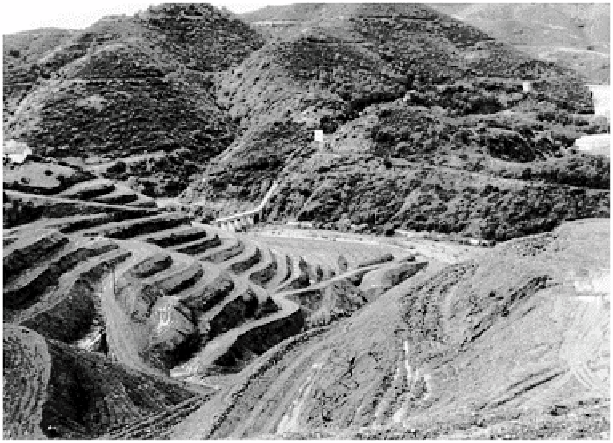Environmental Engineering Reference
In-Depth Information
again northwards (Valencia 472 mm). This trend reflects both the increasing protection
from onshore cyclonic storms in winter and the 'rain shadow' of the Sierra Nevada and
the Spanish Meseta. Therefore the distribution of shrubland, heath, steppe and semidesert
is climatically controlled in a regional sense. As mountainous terrain is common in
Mediterranean countries and islands, these trends are significant.
Increased elevation as one travels inland from the coast leads also to lower
temperatures, reduced evapotranspiration rates and increased moisture effectiveness. The
zonation of Mediterranean vegetation with altitude, because of these changes in climate,
has been one of the most studied features of the ecosystem. Figure 26.10 shows the
altitudinal gradients which are common to many upland massifs. Below 750 m the typical
Mediterranean tree species will be found on land not cleared for cultivation. Also in this
zone the commonest Mediterranean conifer (Aleppo pine) will be planted extensively in
afforestation
Plate 26.3
Clearance of natural vegetation continues apace.
Land similar to that in the background is being terraced in
preparation for the planting of avocado orchards.
Photo: Ken Atkinson.

